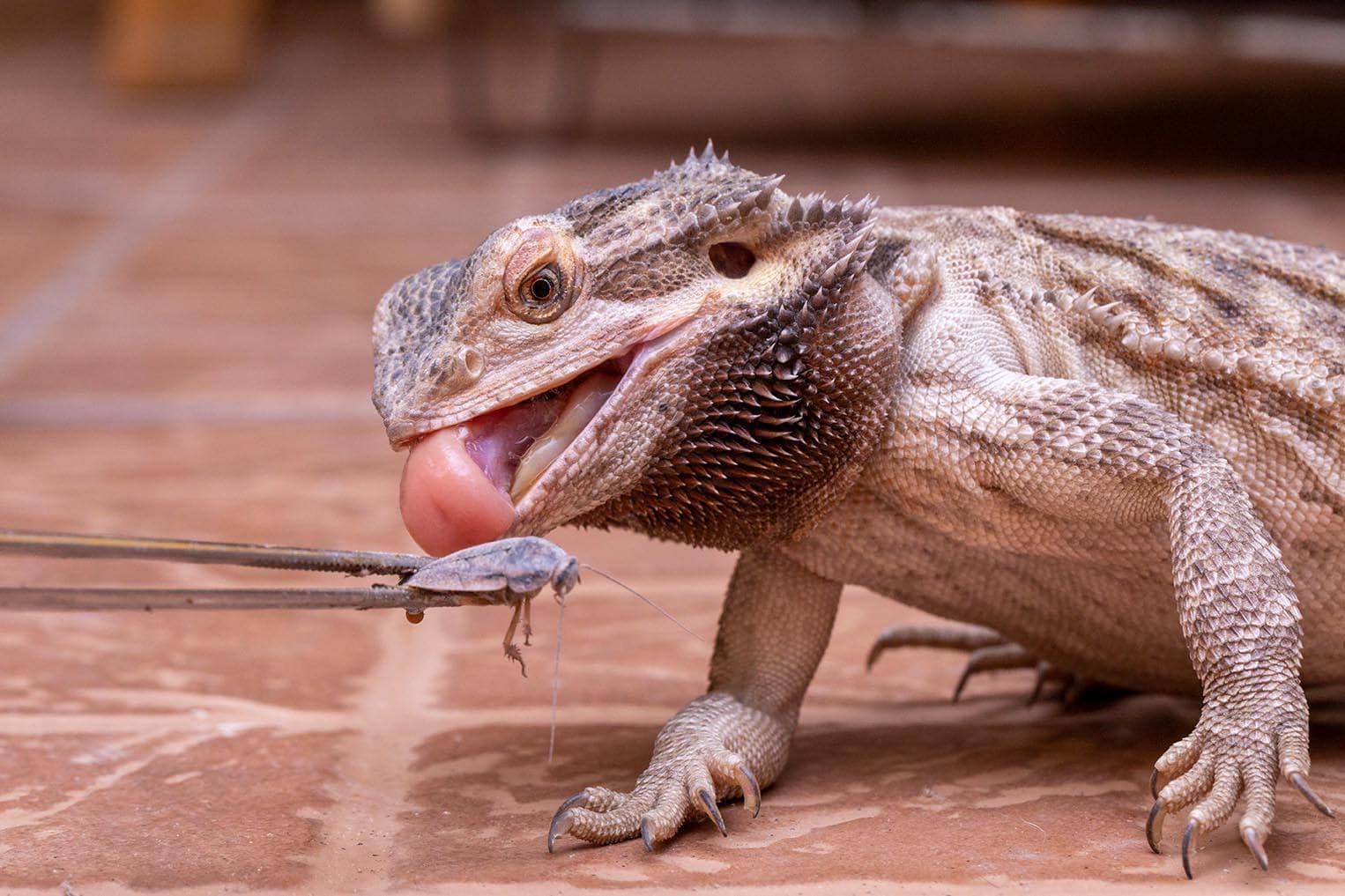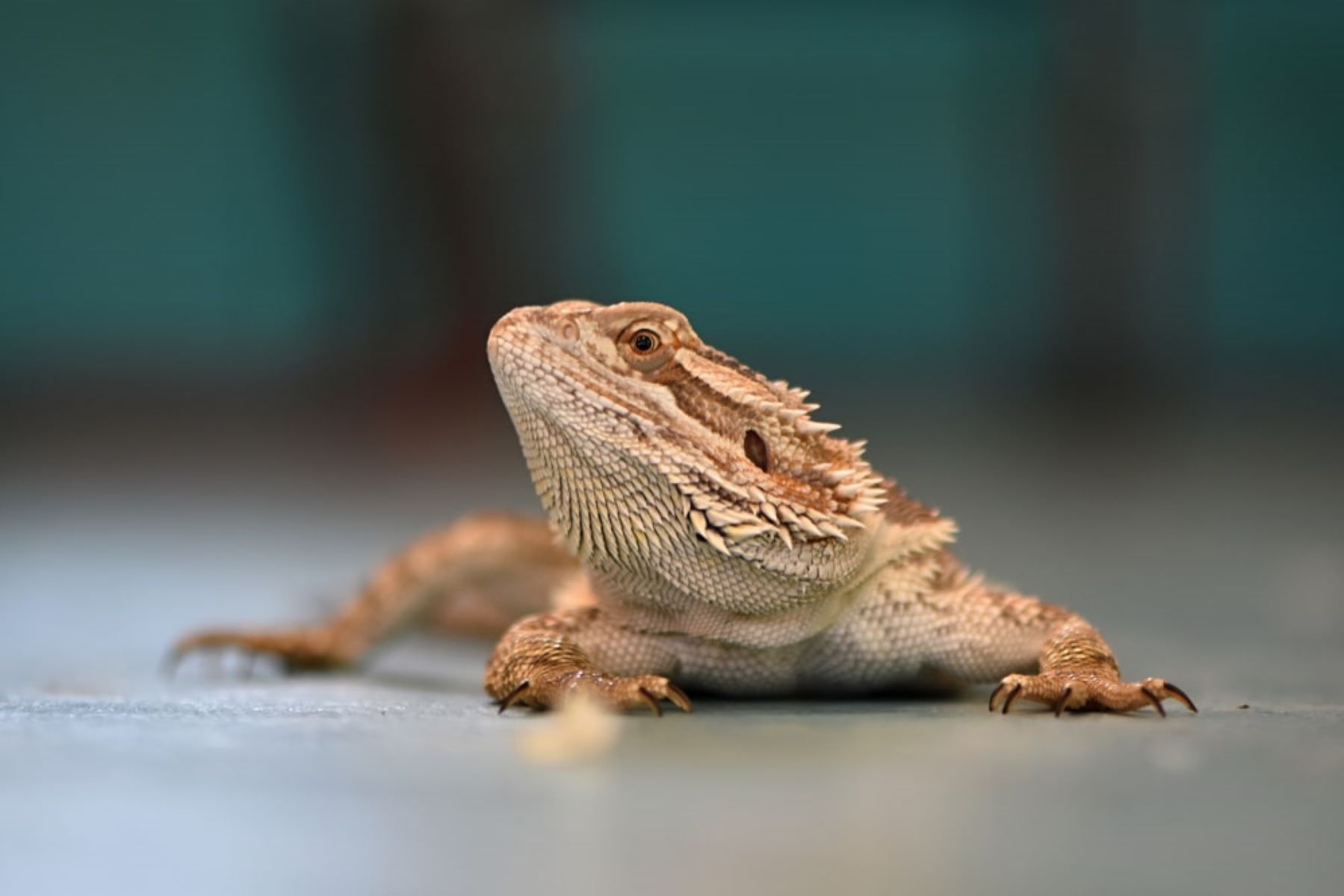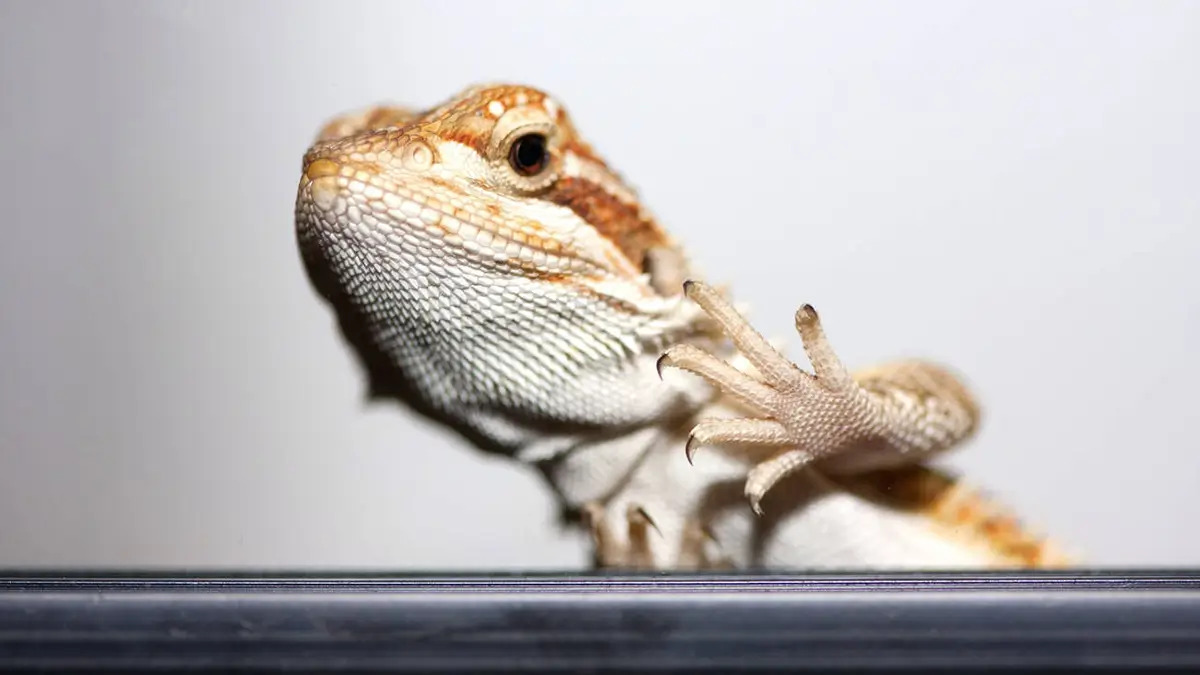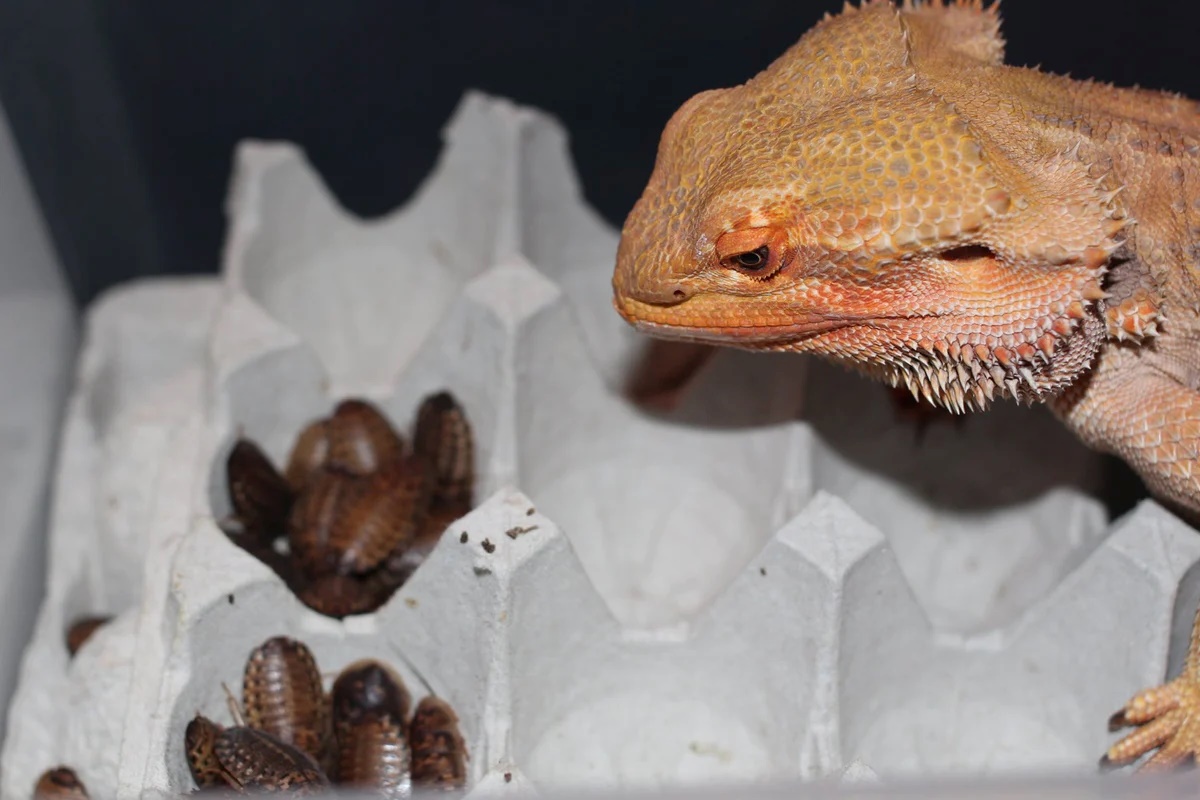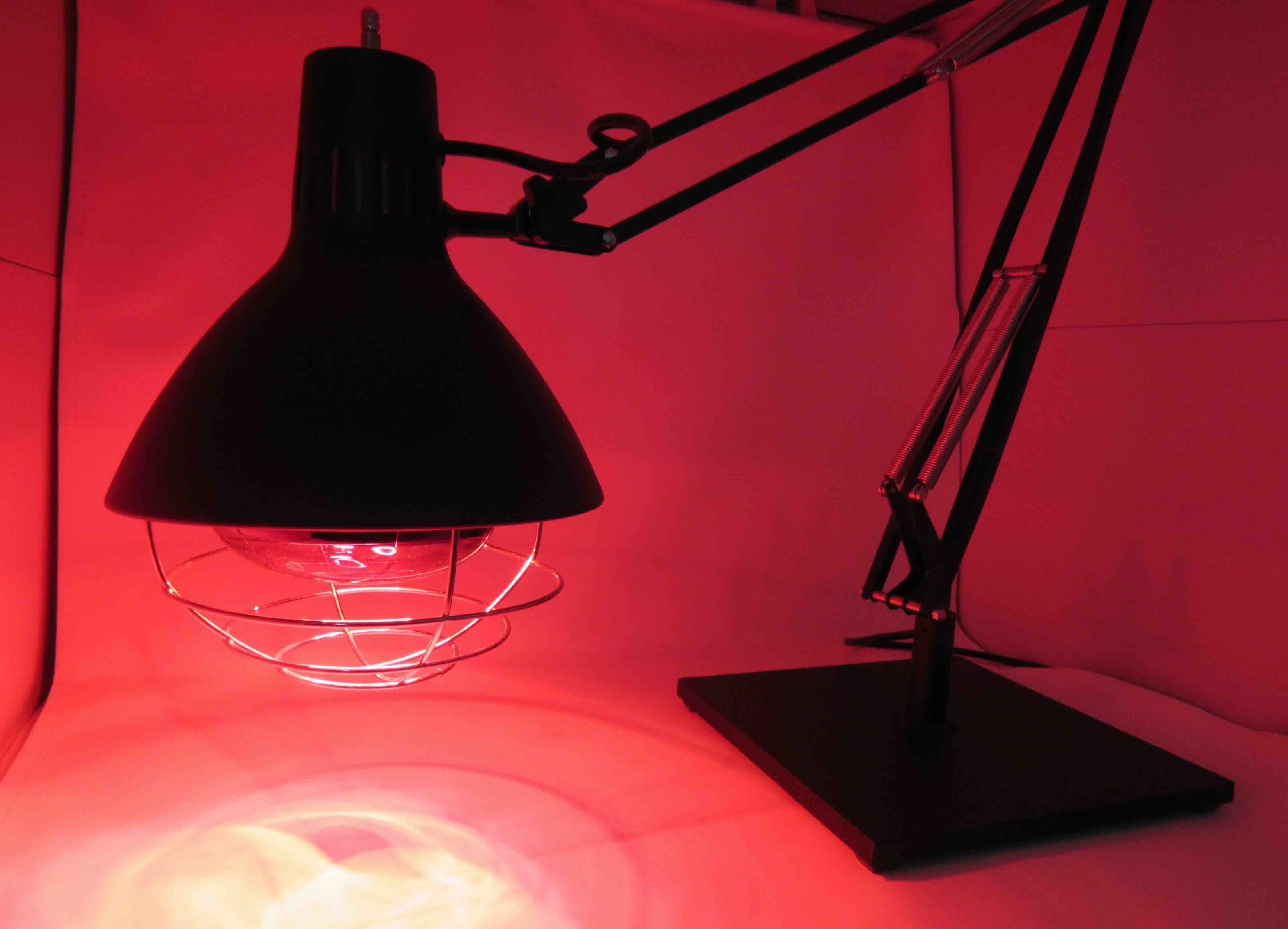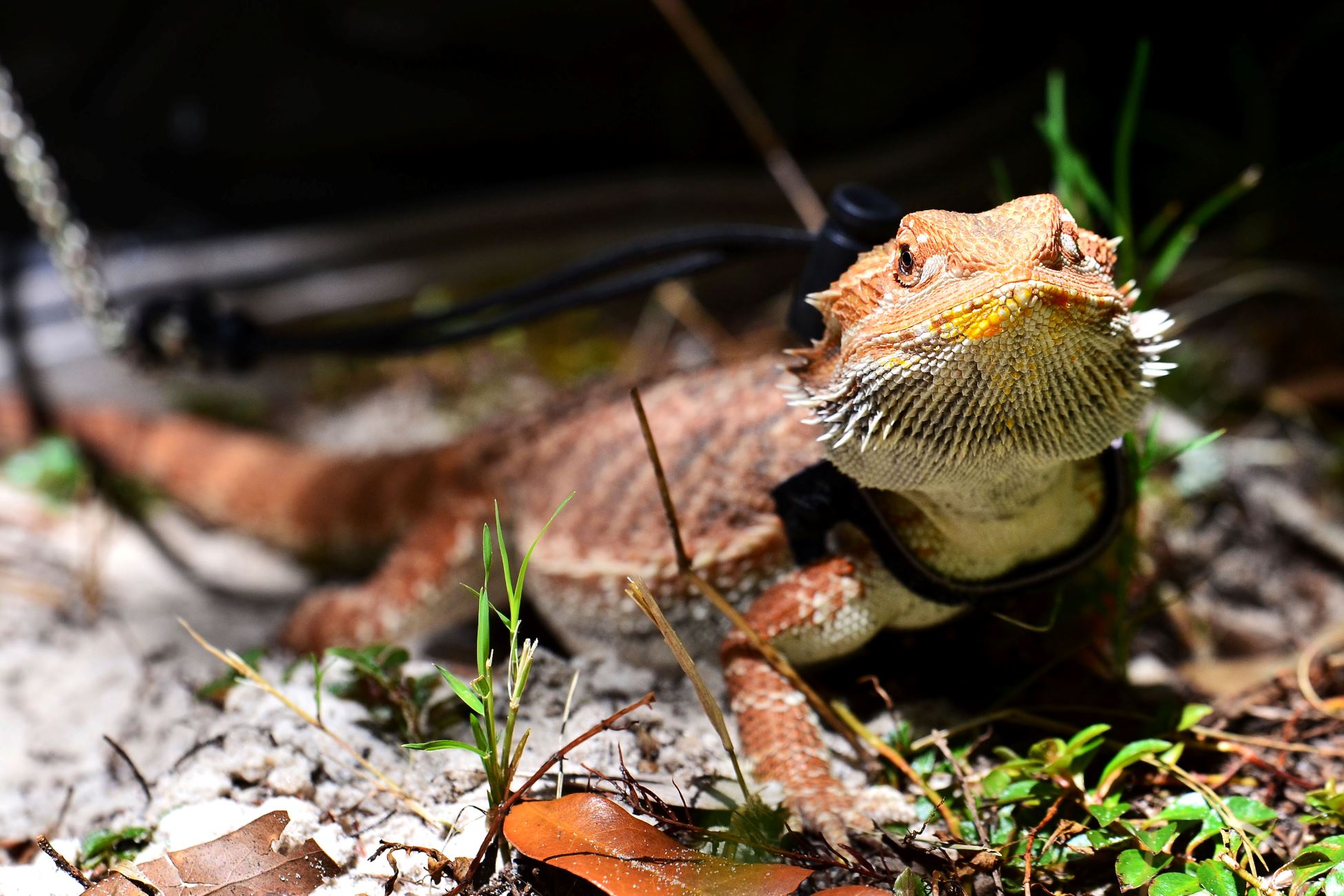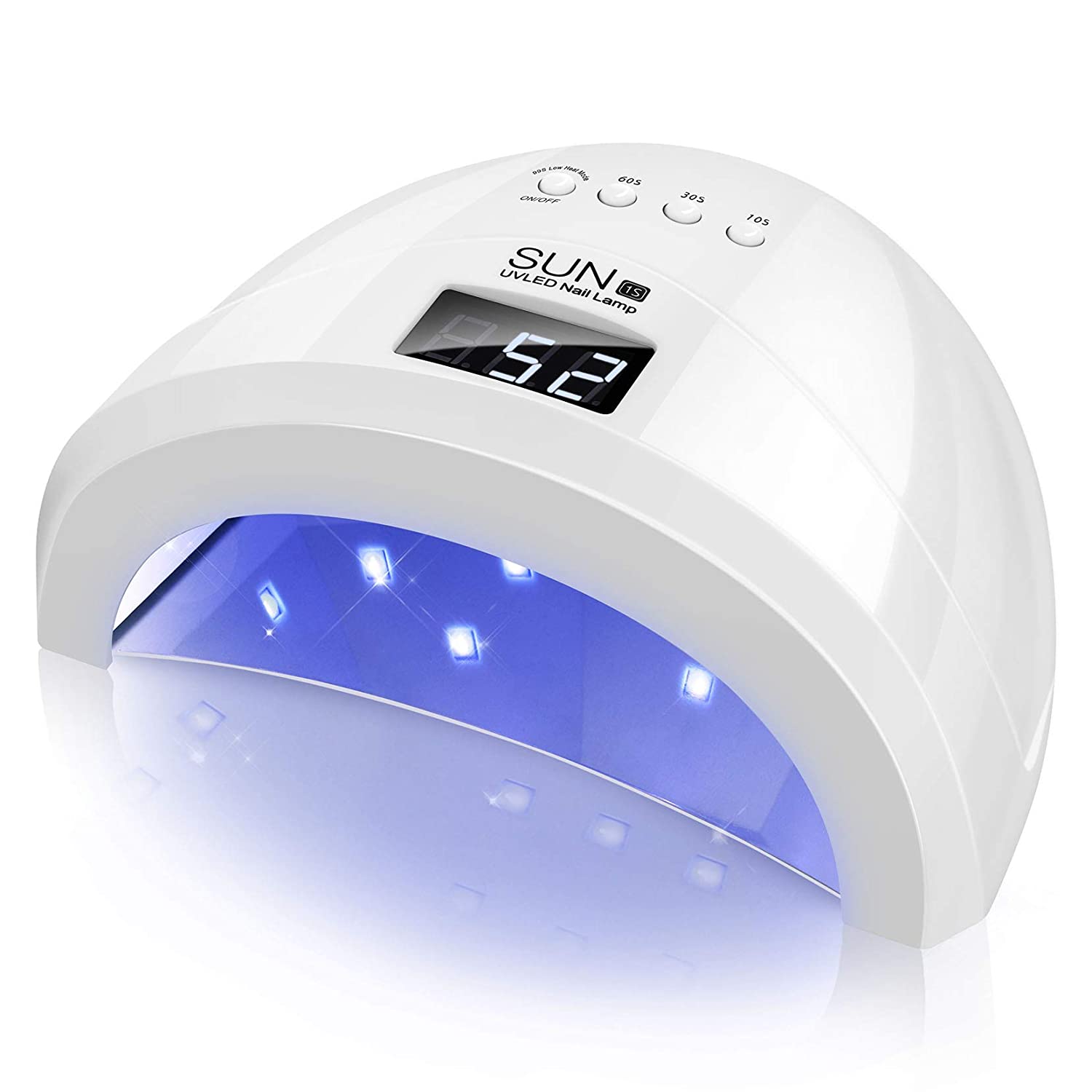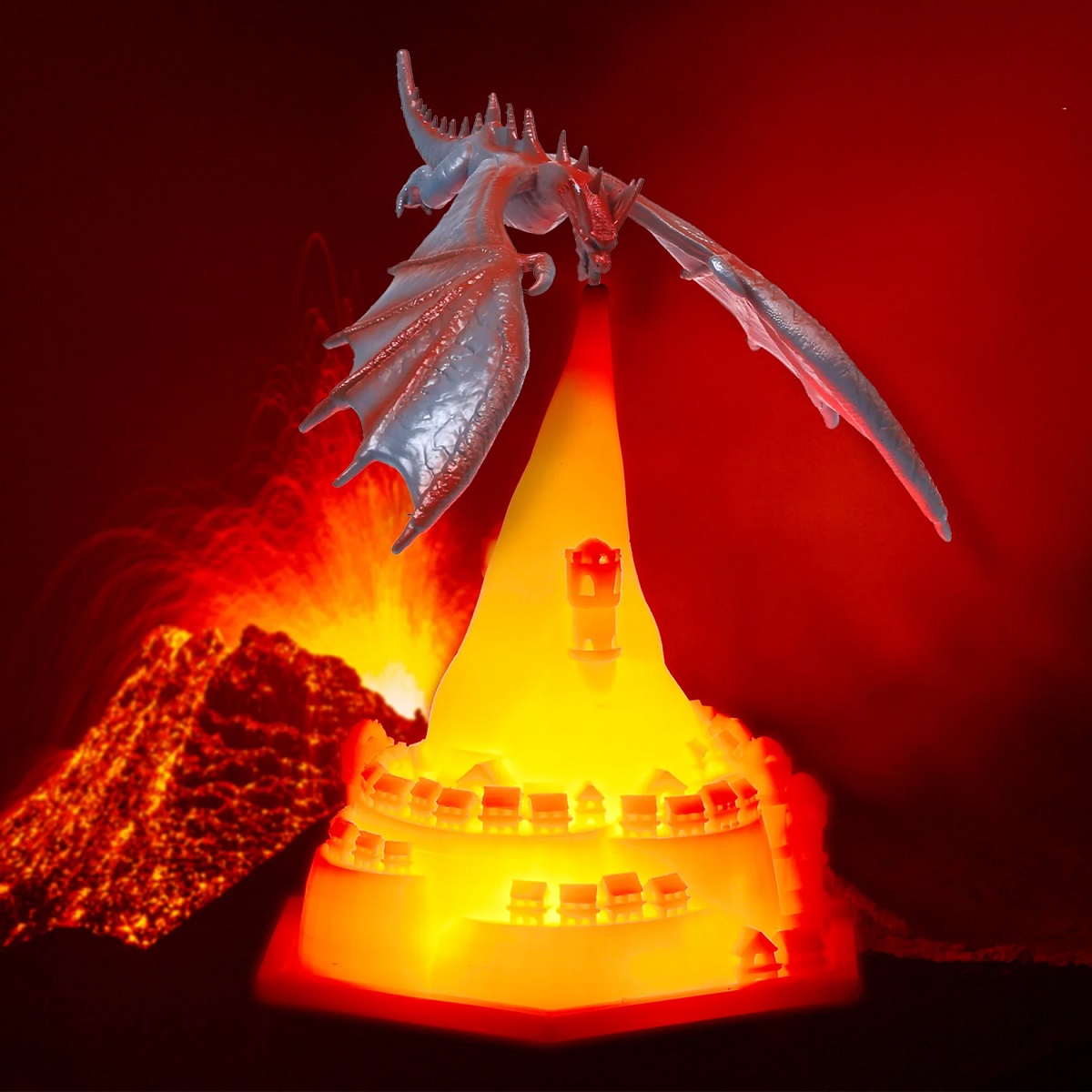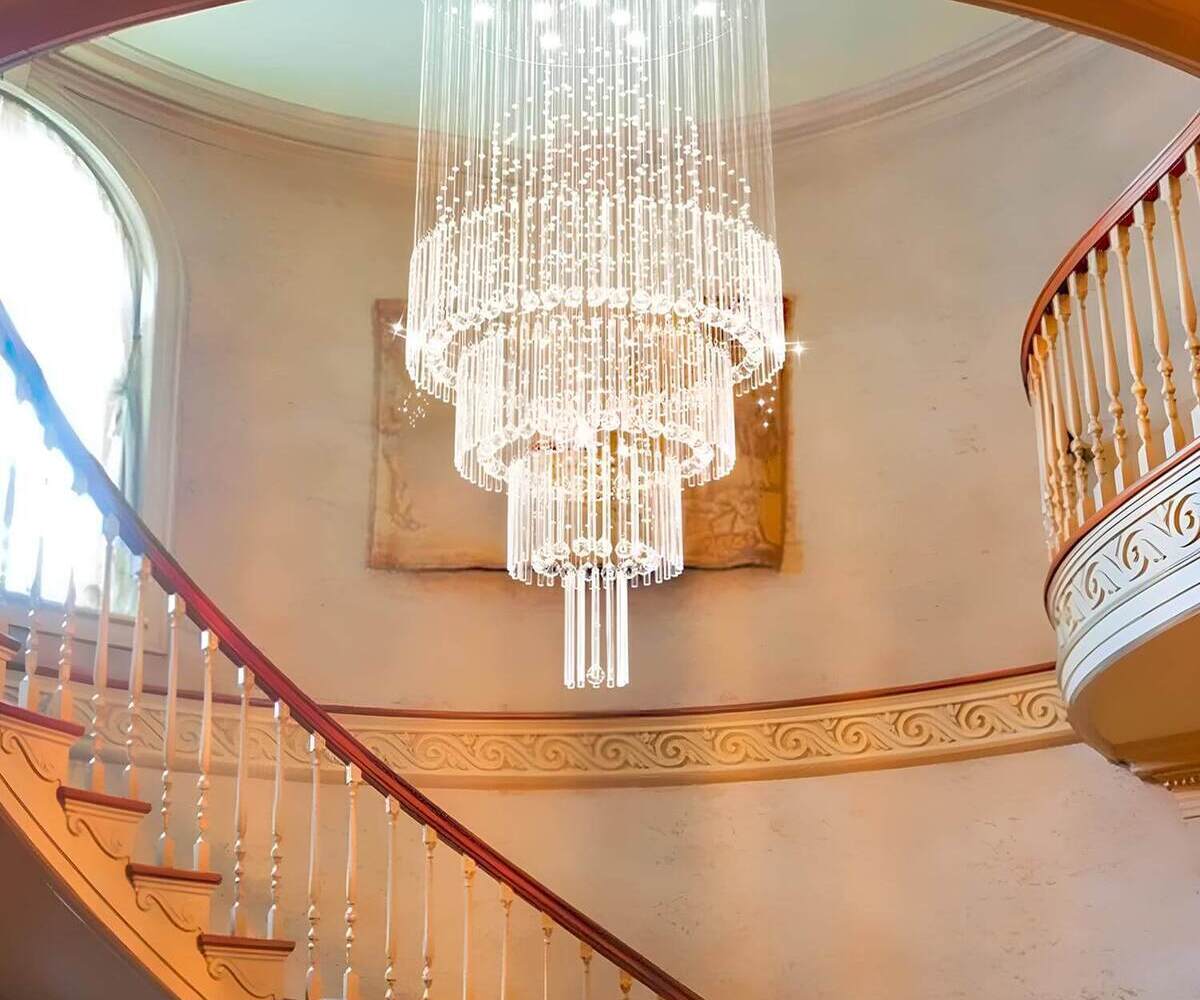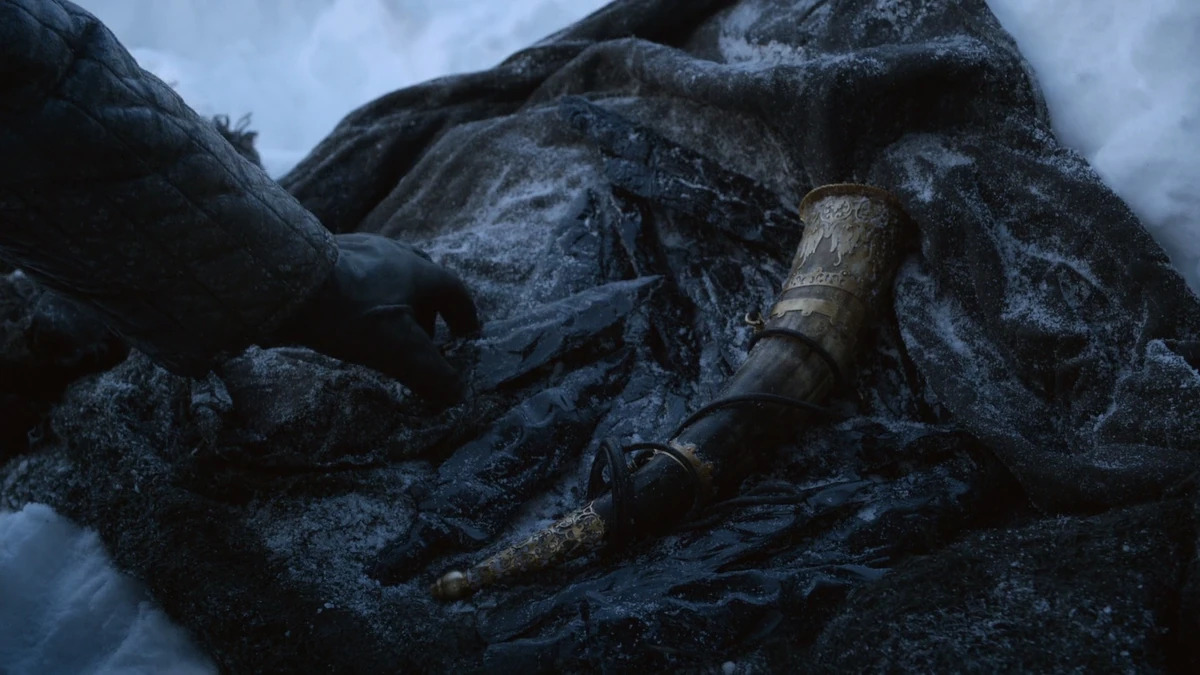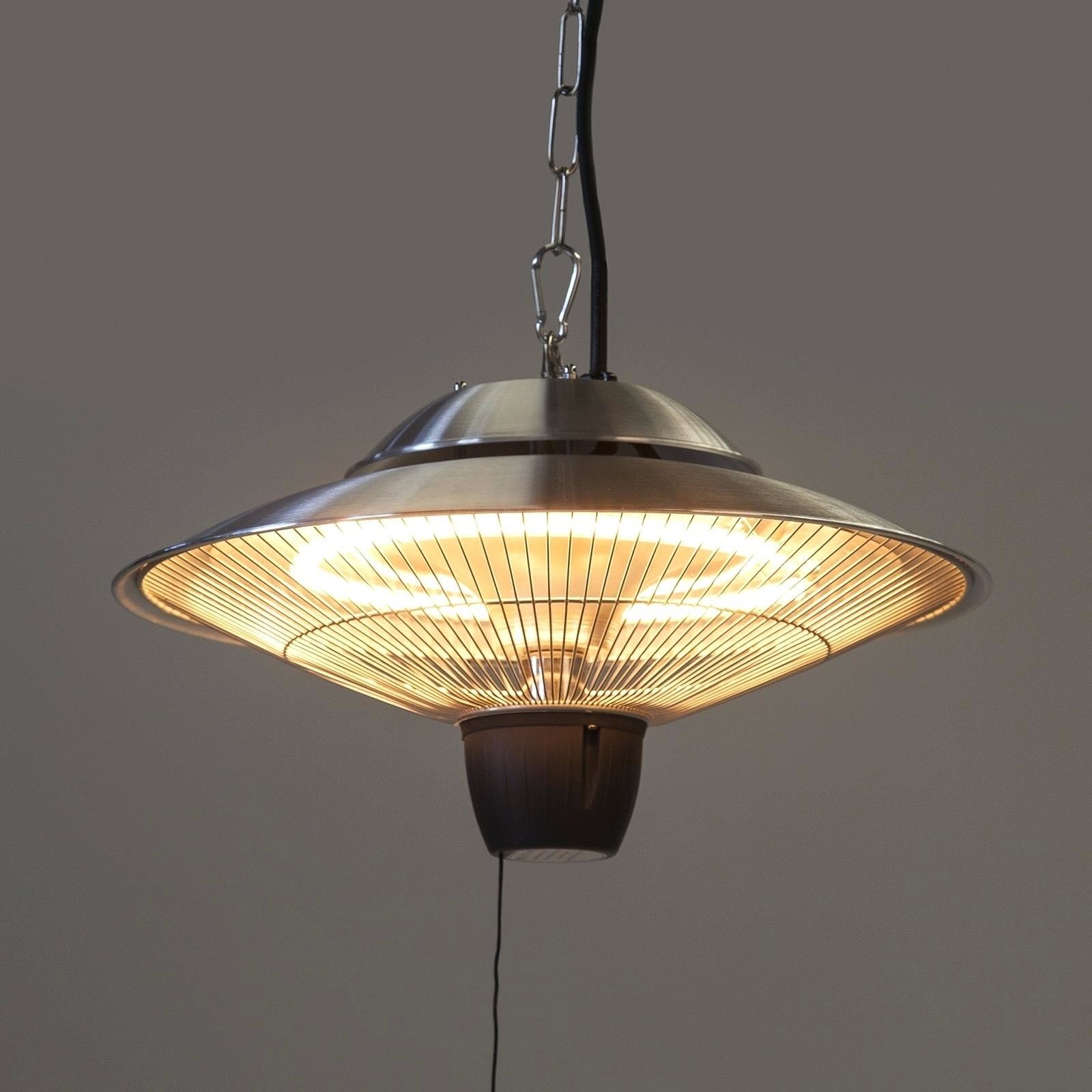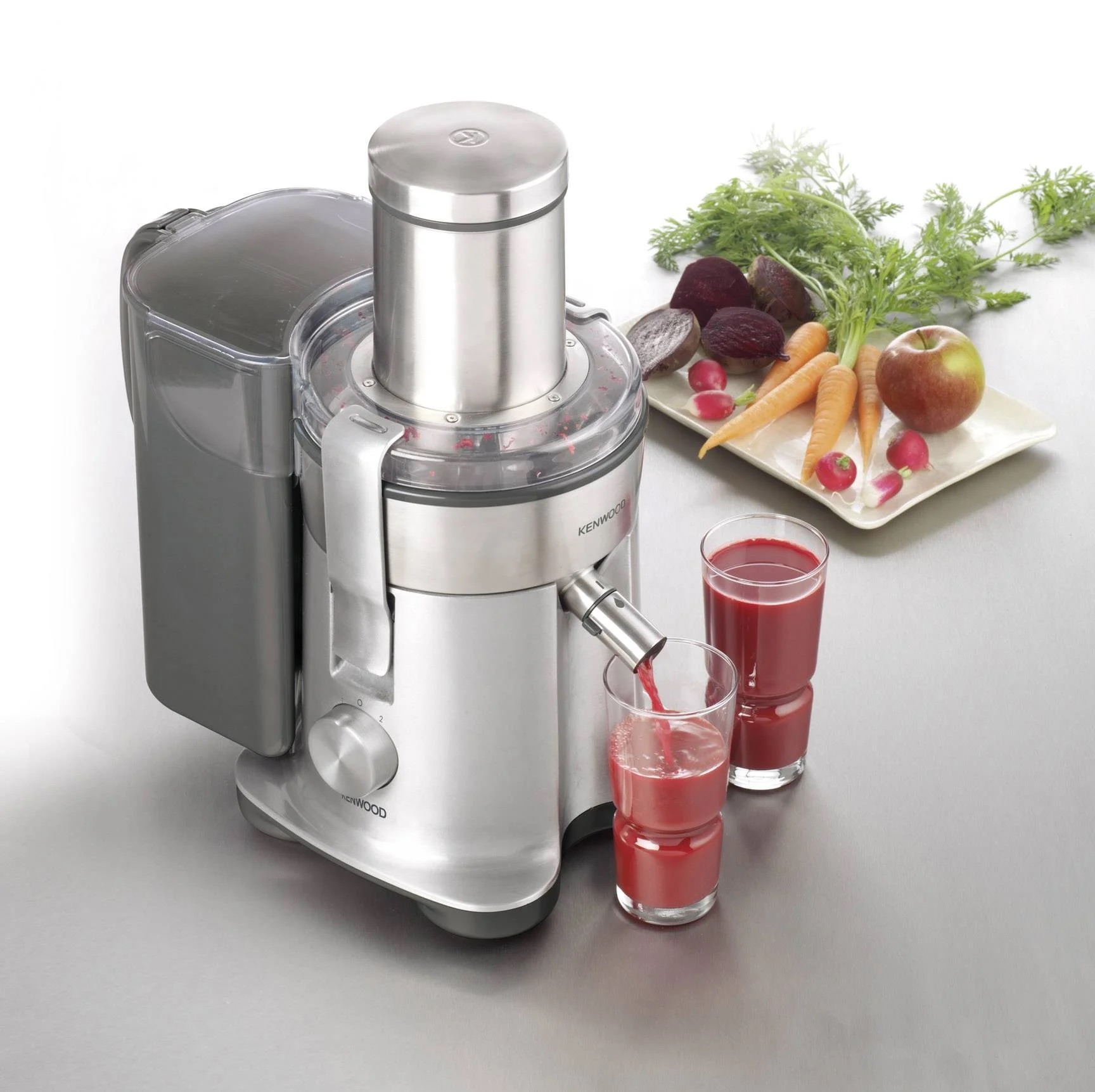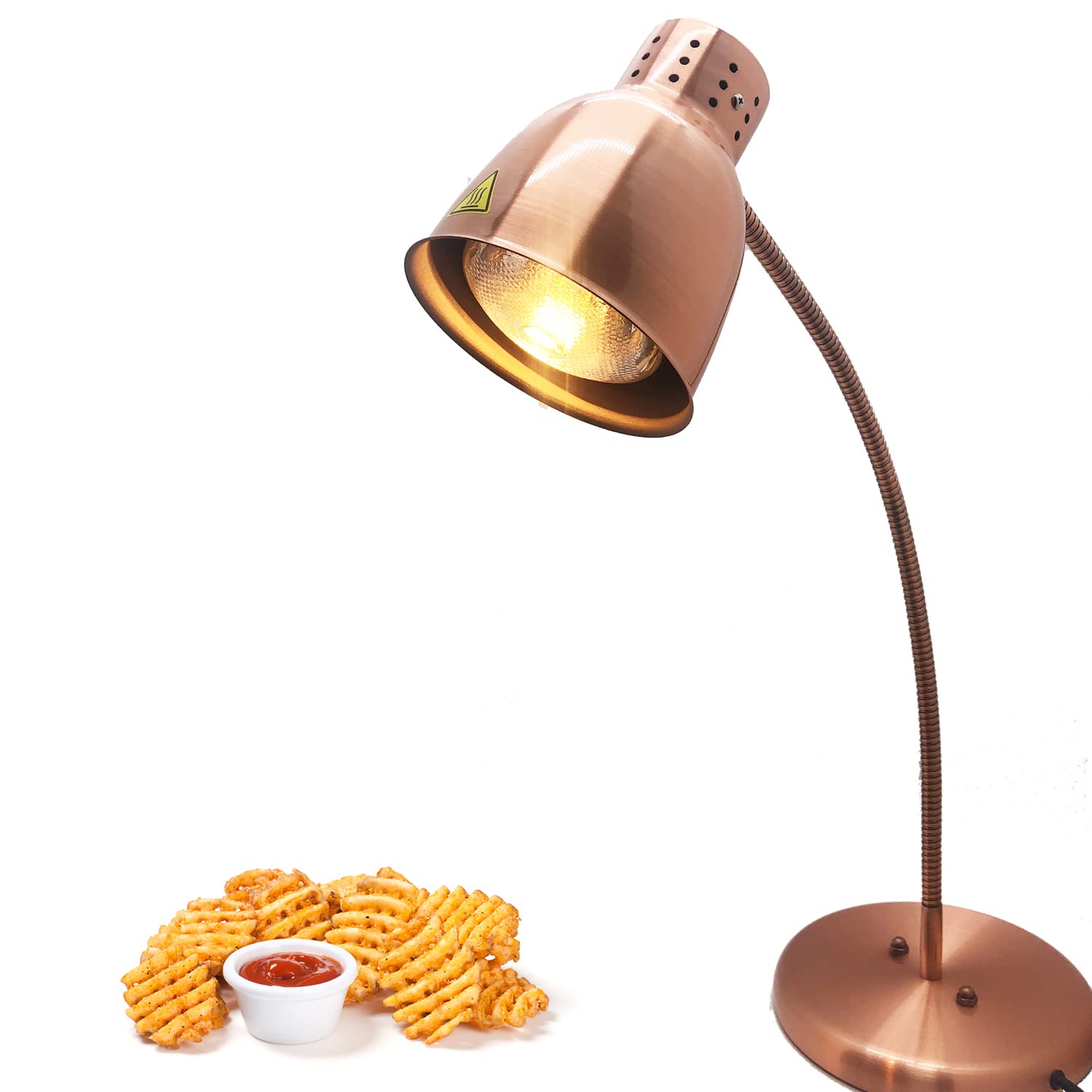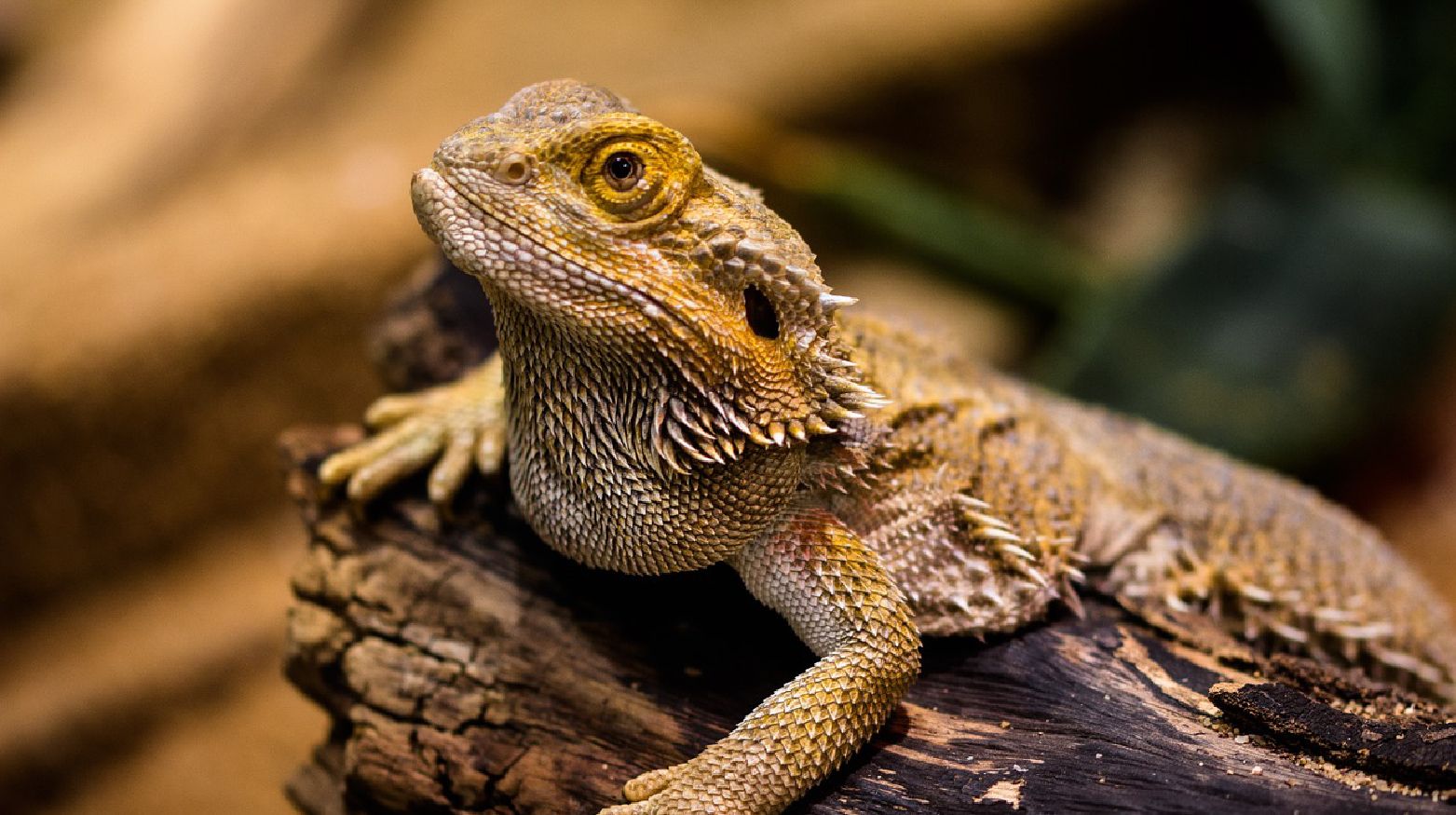

Furniture
What Wattage Heat Lamp For A Bearded Dragon
Modified: February 23, 2024
Looking for the right watt heat lamp for your bearded dragon? Explore our wide range of furniture options to create a comfortable habitat for your reptile companion.
(Many of the links in this article redirect to a specific reviewed product. Your purchase of these products through affiliate links helps to generate commission for Storables.com, at no extra cost. Learn more)
Introduction
Welcome to our guide on the importance of heat lamps for bearded dragons. If you are a proud owner of a bearded dragon, you know that providing the right environmental conditions is crucial for their health and well-being. One essential aspect of creating an optimal habitat for your pet reptile is the provision of appropriate heat sources. Heat lamps play a vital role in maintaining the ideal temperature for these cold-blooded creatures.
In the wild, bearded dragons are native to hot and arid regions, where they bask under the sun to regulate their body temperature. As reptiles, they rely on external heat sources to raise their body temperature. In captivity, it is essential to replicate these conditions to ensure their physiological needs are met.
In this article, we will delve into the factors you need to consider when choosing a heat lamp for your bearded dragon and discuss the recommended wattage based on their specific needs. We will also explore the potential risks of using the incorrect wattage heat lamps and provide tips on setting up and positioning the lamp for optimal heat distribution.
Additionally, we will touch upon the importance of monitoring and maintaining the correct temperature in the enclosure to prevent any adverse effects on your bearded dragon’s health. Finally, we will discuss alternative heating sources that can be used alongside heat lamps to create a well-rounded heating system.
So, if you want to ensure that your bearded dragon is comfortable and thriving in its habitat, join us on this informative journey as we unravel the mysteries of heat lamps and their role in keeping your scaly friend happy and healthy.
Key Takeaways:
- Proper wattage selection is crucial for bearded dragon heat lamps to maintain optimal temperature gradients and ensure their health and well-being. Regular monitoring and adjustments are essential for creating a comfortable habitat.
- In addition to heat lamps, consider alternative heating sources like ceramic heat emitters or heat mats to supplement or backup the primary heat source. Always prioritize safety and consult with experts for personalized guidance.
Importance of Heat Lamps for Bearded Dragons
Heat lamps are essential for bearded dragons as they help to create the necessary temperature gradient within their enclosure. These reptiles are ectothermic, meaning they rely on external heat sources to regulate their body temperature. The proper temperature range for bearded dragons is crucial for their metabolism, digestion, and overall well-being.
Bearded dragons are most active during the day and require a basking spot that provides direct heat to mimic the warmth of the sun. This allows them to properly digest their food and absorb essential nutrients. Heat lamps not only provide the required warmth for digestion but also simulate their natural habitat, helping to maintain their natural behavior and overall health.
Another important aspect of heat lamps is their role in providing a thermal gradient. Bearded dragons need access to different temperature zones within their enclosure to regulate their body temperature and choose the optimal spot for thermoregulation. This gradient allows them to move between warmer and cooler areas as needed, which is crucial for their overall health and comfort.
Without a properly functioning heat lamp, bearded dragons may become lethargic, lose their appetite, and have difficulty digesting their food. Inadequate heat can also lead to weakened immune systems, respiratory issues, and even metabolic disorders. Therefore, investing in a high-quality heat lamp is essential for the overall health and well-being of your bearded dragon.
Additionally, heat lamps also play a crucial role in providing the necessary UVB radiation for bearded dragons. These reptiles require UVB light for the synthesis of vitamin D3, which is essential for absorbing calcium from their diet. Calcium is vital for proper bone development and to prevent metabolic bone diseases such as metabolic bone disease (MBD).
Overall, heat lamps are not just a luxury item for bearded dragons, but a necessity for their welfare. By providing the appropriate temperature gradient and access to UVB radiation, heat lamps help mimic their natural environment, ensuring that your bearded dragon remains healthy, active, and content in its captive habitat.
Factors to Consider when Choosing a Heat Lamp
When selecting a heat lamp for your bearded dragon, there are several important factors to consider to ensure that you provide the best possible source of heat. Consider the following factors before making a decision:
- Wattage: The wattage of the heat lamp determines the intensity of the heat it emits. It is crucial to choose the appropriate wattage based on the size of your bearded dragon’s enclosure and the specific temperature requirements of the species. A general rule of thumb is to use a 100-watt bulb for a 40-gallon tank and adjust the wattage accordingly for larger or smaller enclosures.
- Type of Bulb: There are different types of bulbs available, including incandescent bulbs and ceramic heat emitters. Incandescent bulbs emit both heat and light, while ceramic heat emitters produce heat without emitting any light. Consider the specific needs of your bearded dragon and the temperature requirements of their enclosure to determine the most suitable type of bulb.
- UVB Output: As mentioned earlier, bearded dragons require UVB radiation for the synthesis of vitamin D3. Some heat lamps come with built-in UVB capabilities, which can be a convenient option. However, it is important to note that these bulbs may not provide sufficient UVB radiation for bearded dragons, and additional UVB lighting may be required.
- Durability: Heat lamps should be durable and long-lasting to ensure that they can withstand the demanding conditions inside the bearded dragon enclosure. Look for bulbs that are specifically designed for reptile habitats and have a reputation for durability.
- Safety Features: Safety should always be a top priority when choosing a heat lamp. Look for bulbs that have built-in safety features such as a protective guard or a shatter-resistant coating. These features help prevent accidents and protect your bearded dragon from burns.
- Energy Efficiency: Consider the energy efficiency of the heat lamp to minimize electricity usage. Look for bulbs that are energy-efficient without compromising on heat output.
- Brand Reputation: It is important to choose a heat lamp from a reputable brand known for producing high-quality reptile products. Research customer reviews and seek recommendations from experienced reptile owners to ensure you select a reliable and trusted manufacturer.
By considering these factors, you can make an informed decision when choosing a heat lamp for your bearded dragon. Remember, providing the right source of heat is crucial for the health and well-being of your reptile companion, so invest in a quality heat lamp that meets their specific needs.
Recommended Wattage for Heat Lamps for Bearded Dragons
Choosing the correct wattage for your bearded dragon’s heat lamp is crucial to ensure that the temperature in their enclosure is properly regulated. The wattage you need will depend on various factors, including the size of the enclosure and the ambient temperature of your home. Here are some general guidelines to help determine the recommended wattage for heat lamps:
- For a 40-gallon tank or smaller, a 100-watt bulb is typically sufficient. This provides a good balance of heat output without generating excessive heat.
- For larger enclosures, such as a 75-gallon tank or above, you may need to use a higher wattage bulb, such as 150 watts or even 200 watts, to adequately heat the space.
- If your home tends to be colder, you may need a higher wattage bulb to compensate for the cooler ambient temperature. Conversely, if your home is warmer, you may be able to use a lower wattage bulb.
- In addition to the wattage of the bulb, it is essential to consider the distance between the bulb and the basking spot. Adjusting the height of the bulb can help fine-tune the heat emitted. If the basking spot temperature is too high, raising the bulb slightly can decrease the intensity of the heat, and vice versa.
- Monitor the temperature inside the enclosure using a digital thermometer to ensure that the basking spot temperature falls within the recommended range for your bearded dragon species. The basking spot temperature should typically range between 100 to 110 degrees Fahrenheit (37 to 43 degrees Celsius).
- Bearded dragons also require a cooler area within their enclosure, referred to as the “cool zone.” The cool zone should maintain a temperature between 75 to 85 degrees Fahrenheit (24 to 29 degrees Celsius) during the day and drop slightly at night.
It is important to remember that these recommendations are general guidelines, and individual bearded dragons may have specific temperature preferences. Always observe your bearded dragon’s behavior and adjust the heat lamp wattage or positioning accordingly to ensure they are comfortable and thriving.
It is also worth noting that as bearded dragons grow, their housing requirements may change. As they get larger, you may need to increase the wattage of the heat lamp or consider using multiple heat sources to maintain the appropriate temperature gradient within the enclosure.
By providing the recommended wattage for heat lamps and monitoring the temperature closely, you can help create a comfortable and healthy environment for your bearded dragon.
Understanding Temperature Needs of Bearded Dragons
Having a thorough understanding of the temperature needs of your bearded dragon is essential for creating a suitable habitat that promotes their health and well-being. These reptiles require specific temperature gradients within their enclosure to mimic their natural environment and allow for proper thermoregulation. Let’s explore their temperature requirements in more detail:
Basking Spot: Bearded dragons require a basking spot that provides direct heat, simulating the warmth they would experience from the sun in their natural habitat. The basking spot temperature should be between 100 to 110 degrees Fahrenheit (37 to 43 degrees Celsius) during the day. This elevated temperature allows them to raise their body temperature, aiding digestion and overall metabolic function.
Cool Zone: In addition to the basking spot, bearded dragons also need a cooler area within their enclosure to retreat to when they want to cool down. The cool zone should maintain a temperature between 75 to 85 degrees Fahrenheit (24 to 29 degrees Celsius) during the day. This provides a comfortable area for them to regulate their body temperature and prevents overheating.
Nighttime Temperature Drop: Just like in the wild, bearded dragons experience a drop in temperature during the nighttime. It is important to provide a gradual decrease in temperature during the evening hours. The nighttime temperature should be around 65 to 75 degrees Fahrenheit (18 to 24 degrees Celsius) to allow for proper rest and relaxation.
Temperature Gradient: Creating a temperature gradient within the enclosure is critical. This means having a range of temperatures that allows the bearded dragon to move between warmer and cooler areas as needed. The temperature gradually changes from the basking spot to the cool zone, providing options for thermoregulation.
Monitoring the temperature is crucial to ensure it remains within the appropriate range for your bearded dragon’s species. Use a reliable digital thermometer to accurately measure the temperature at both the basking spot and the cool zone. Regularly check and adjust the positioning of the heat lamp and the height of the bulb to achieve the desired temperature gradient.
It is important to note that bearded dragons require a consistent day-to-night temperature cycle to maintain their natural biological rhythms. Avoid exposing them to sudden temperature fluctuations or extreme heat or cold. Consistency and stability in temperature are key to their overall well-being.
By understanding and providing the appropriate temperature needs of your bearded dragon, you can create a comfortable and stimulating environment that promotes their natural behaviors and supports their overall health and vitality.
A 100-150 watt heat lamp is recommended for a bearded dragon’s basking spot. Make sure to use a thermostat to regulate the temperature and prevent overheating.
Read more: How To Store Hornworms For Bearded Dragons
Potential Risks of using Incorrect Wattage Heat Lamps
Using the incorrect wattage heat lamp for your bearded dragon’s enclosure can pose several risks and have negative impacts on their health and well-being. It is crucial to understand the potential risks associated with using the wrong wattage to ensure you provide a safe and suitable environment for your reptile companion. Here are some potential risks to be aware of:
- Inadequate Heating: Using a lower wattage heat lamp than recommended may result in inadequate heating of the enclosure. Insufficient heat can lead to your bearded dragon being unable to properly regulate its body temperature, compromising its digestion, metabolism, and overall health. They may exhibit symptoms such as reduced appetite, sluggishness, and impaired immune function.
- Overheating: On the other hand, using a heat lamp with too high wattage can cause overheating in the enclosure. This can result in heat stress, dehydration, and potentially life-threatening conditions for your bearded dragon. They may display signs of distress, such as gaping, excessive panting, trying to escape the enclosure, or even collapsing.
- Burns: Incorrect wattage heat lamps can also increase the risk of burns to your bearded dragon. If the heat lamp is too close to the basking spot or the temperature is too high, your pet may come into direct contact with the hot surface, resulting in thermal burns. Burns can be painful, lead to infection, and require veterinary intervention.
- Inaccurate Temperature Gradients: Using the wrong wattage heat lamp can disrupt the establishment of the appropriate temperature gradients within the enclosure. Bearded dragons rely on temperature variation to thermoregulate and move between warmer and cooler areas as needed. Incorrect wattage can lead to an inadequate temperature gradient, affecting the overall comfort and well-being of your pet.
- Stress and Behavioral Issues: Bearded dragons are sensitive to their environmental conditions, and using an incorrect wattage heat lamp can cause unnecessary stress. Stress can lead to behavioral problems, such as aggression, lethargy, excessive hiding, and even self-harm. A properly regulated and comfortable environment helps ensure the emotional and mental well-being of your bearded dragon.
To mitigate these risks, it is crucial to carefully consider the wattage recommendations for your bearded dragon’s enclosure size and species. Regularly monitor the temperature using a reliable thermometer and make necessary adjustments to maintain the optimal temperature gradient. Remember, the well-being of your bearded dragon depends on providing the right environmental conditions, including the appropriate heat source.
Consulting with a reptile veterinarian or an experienced reptile keeper can provide further guidance and help ensure that you select the correct wattage heat lamp for your bearded dragon’s specific needs. By prioritizing safety and implementing proper heating practices, you can help keep your beloved reptile companion happy and healthy.
Tips for Setting up and Positioning the Heat Lamp
Properly setting up and positioning the heat lamp for your bearded dragon is crucial to ensure that they receive the right amount of heat and create the necessary temperature gradient within their enclosure. Here are some helpful tips to guide you:
- Choose the Right Fixture: Select a heat lamp fixture that is appropriate for the type of bulb you are using. Ensure that it can securely hold the bulb and has a built-in reflector to direct the heat downwards.
- Position the Heat Lamp: Place the heat lamp at one end of the enclosure to create a basking spot. This spot should be elevated and provide a direct heat source for your bearded dragon to thermoregulate. The other end of the enclosure should be the cooler zone.
- Adjust the Height: The height of the heat lamp can influence the temperature at the basking spot. If the temperature is too high, raise the lamp slightly to decrease the intensity of the heat. If the temperature is too low, lower the lamp closer to the basking spot. Regularly monitor the temperature and make fine adjustments as needed.
- Provide Adequate Ventilation: Ensure that there is proper ventilation in the enclosure to allow for air circulation. This helps prevent overheating and allows fresh air to circulate throughout the enclosure.
- Use a Heat Lamp Guard: To prevent accidental burns, consider using a heat lamp guard or cage around the bulb. This will help protect your bearded dragon from coming into direct contact with the hot surface and minimize the risk of injury.
- Avoid Direct Contact: Make sure there is no direct contact between your bearded dragon and the heat lamp or bulb. This can prevent accidental burns and injuries. Bearded dragons may climb and explore, so ensure that the lamp is properly positioned and secured to avoid any accidents.
- Maintain a Suitable Distance: Depending on the wattage and type of bulb, maintain a suitable distance between the heat lamp and the basking spot. Follow the manufacturer’s recommendations and monitor the temperature regularly to ensure it falls within the appropriate range for your bearded dragon’s species.
- Consider Using a Timer: To simulate a natural day-night cycle, it can be beneficial to use a timer for the heat lamp. This ensures consistent lighting and temperature control for your bearded dragon, promoting their regular activities and rest periods.
Always prioritize the safety and well-being of your bearded dragon when setting up and positioning the heat lamp. Monitor the temperature closely, observe your pet’s behavior, and make any necessary adjustments to maintain the optimal temperature gradient within the enclosure.
If you are unsure about the setup or positioning of the heat lamp, consult with a reptile veterinarian or an experienced reptile keeper for guidance specific to your bearded dragon’s needs. By providing a suitable heat source and ensuring proper positioning, you can create a comfortable and stimulating environment for your bearded dragon to thrive in.
Monitoring and Maintaining the Correct Temperature
Proper monitoring and maintenance of the correct temperature in your bearded dragon’s enclosure are crucial for their health and well-being. Here are some tips to help you effectively monitor and maintain the temperature:
- Use Digital Thermometers: Invest in reliable digital thermometers to accurately measure the temperature at different points within the enclosure. Place one thermometer near the basking spot and another in the cool zone to ensure you have an accurate reading of the temperature gradient.
- Regularly Check Temperatures: Make it a habit to routinely check the temperature in the basking spot, cool zone, and the overall enclosure. Ideally, you should check the temperature at least twice a day to ensure it remains within the appropriate range for your bearded dragon’s species.
- Adjust the Heat Lamp Position: If the temperature in the basking spot is too low or too high, adjust the height or position of the heat lamp accordingly. Raising the lamp will decrease the temperature, while lowering it will increase the temperature. Use the digital thermometer to guide your adjustments.
- Monitor Seasonal Changes: Keep in mind that the ambient temperature in your home may fluctuate throughout the year. Adjustments to the heat lamp positioning or wattage may be necessary during warmer or colder seasons to maintain the desired temperature range.
- Consider Using a Heat Mat: In addition to a heat lamp, you may also use a heat mat or under-tank heater to provide supplemental heating. These can help maintain a stable temperature in the enclosure, especially during the night when the heat lamp may be turned off.
- Observe Your Bearded Dragon’s Behavior: Pay attention to your bearded dragon’s behavior and activity levels. If they are constantly seeking the basking spot or trying to move away from it, it could be an indication that the temperature is not suitable. Adjust the heat lamp or consult with a reptile veterinarian for guidance.
- Keep a Temperature Log: Maintain a temperature log to track and record the temperature readings over time. This can help identify any patterns or inconsistencies, allowing you to make necessary adjustments and ensure a consistent, suitable temperature for your bearded dragon.
- Regularly Clean the Enclosure: Dust or debris accumulation around the heat lamp can impact its effectiveness. Periodically clean the enclosure and remove any dust or debris to ensure the heat lamp can provide optimal heat output.
Monitoring and maintaining the correct temperature for your bearded dragon is an ongoing process. Regular checks, adjustments, and attention to your pet’s behavior will ensure a comfortable and healthy living environment. Remember, consistency and stability in temperature are important for the overall well-being of your bearded dragon.
If you are unsure about temperature regulation or notice any significant fluctuations, consult with a reptile veterinarian or an experienced reptile keeper for further guidance specific to your bearded dragon’s needs. By ensuring proper temperature maintenance, you are providing your bearded dragon with the optimal living conditions they require to thrive.
Alternate Heating Sources for Bearded Dragons
While heat lamps are the most common and effective way to provide heat for bearded dragons, there are also alternative heating sources that can be used alongside or as a backup option. These alternate heating sources can be beneficial in certain situations or as supplemental heat. Here are a few options to consider:
- Ceramic Heat Emitters (CHE): Ceramic heat emitters emit heat without producing light. They are a popular alternative to heat lamps, especially for nocturnal reptiles or for maintaining a consistent nighttime temperature in the enclosure. CHEs are energy-efficient and can be used alongside a regular heat lamp to provide ambient heat or during warmer seasons when a heat lamp may not be necessary.
- Heat Mats or Under-Tank Heaters (UTH): Heat mats or under-tank heaters are flat heating pads that are placed under a portion of the enclosure. They provide gentle heat from below, simulating the warmth absorbed through the substrate in the wild. Heat mats are commonly used for belly heat and can be useful for maintaining a stable temperature in the enclosure, especially at night when a heat lamp may be turned off. However, they should not be the sole source of heat and should be used in combination with a heat lamp to provide a gradient of temperatures.
- Deep Heat Projector (DHP): Deep heat projectors are special bulbs that emit both heat and infrared light. They are designed to provide a focused, intense heat to a specific area within the enclosure. DHPs can be used as a supplemental heat source alongside a heat lamp, focusing warmth in the basking area. They are particularly useful for larger enclosures or for reptiles that require higher basking temperatures.
- Infrared Ceramic Heaters (IRCH): Infrared ceramic heaters generate heat using infrared radiation rather than visible light. They are long-lasting and energy-efficient options that can be used as an alternative to heat lamps. IRCHs primarily provide radiant heat, making them suitable for targeted basking areas or for reptiles that require warmth without bright light.
- Thermal Radiant Heat Panels (TRHP): Thermal radiant heat panels are large panels that emit gentle, even heat over a broad area. They are typically mounted on the ceiling of the enclosure and provide a non-intrusive source of heat. TRHPs distribute heat effectively throughout the entire enclosure and can be used alongside a heat lamp to create a consistent temperature gradient.
When considering alternative heating sources, it is essential to research and select products specifically designed for reptiles. Follow the manufacturer’s instructions for installation and usage, and ensure they are compatible with your enclosure setup.
Remember, the primary heat source for bearded dragons should still be a heat lamp as it simulates the natural sun exposure that these reptiles require. Alternative heating sources are best used as supplemental heat or as a backup in case of a heat lamp failure.
Before integrating any alternate heating sources, consult with a reptile veterinarian or an experienced reptile keeper to determine the most suitable option for your specific setup and the needs of your bearded dragon.
Read more: How To Make A Bearded Dragon Hammock
Conclusion
Providing the correct heat source for your bearded dragon is essential for their overall health, well-being, and ability to thrive in captivity. Heat lamps play a crucial role in creating the appropriate temperature and temperature gradients within their enclosure, mimicking the conditions they would experience in their natural habitat. By understanding the importance of heat lamps and considering factors such as wattage, bulb type, and UVB output, you can make an informed decision and choose the right heat lamp for your bearded dragon.
Maintaining the correct temperature within the enclosure is vital. Regular monitoring, adjustments to lamp positioning, and observing your pet’s behavior can help ensure the temperature remains optimal for their comfort and physiological needs. Creating a suitable environment also involves setting up the heat lamp properly, providing ventilation, using safety features like guards, and considering alternate heating sources when necessary.
Ultimately, the well-being of your bearded dragon depends on providing them a safe and comfortable habitat that meets their temperature requirements. By prioritizing their heating needs, you can help regulate their metabolism, digestion, and overall health. Remember to consult with a reptile veterinarian or experienced reptile keeper for personalized advice and guidance, specific to your bearded dragon’s needs.
So, take the time to assess your bearded dragon’s enclosure, verify the wattage and positioning of your heat lamp, and ensure a suitable temperature gradient is achieved. By creating an environment that replicates their natural habitat, you are providing the ideal conditions for your bearded dragon to thrive and lead a happy and healthy life in captivity.
Frequently Asked Questions about What Wattage Heat Lamp For A Bearded Dragon
Was this page helpful?
At Storables.com, we guarantee accurate and reliable information. Our content, validated by Expert Board Contributors, is crafted following stringent Editorial Policies. We're committed to providing you with well-researched, expert-backed insights for all your informational needs.
